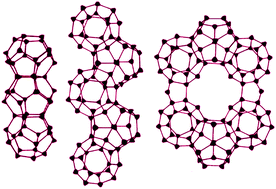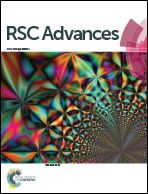Dodecahedrane minibead polymers
Abstract
Nanotubes that are based on six-membered carbon rings have found many exciting technical applications. In this communication, we discuss the synthesis and properties of five membered carbon rings based on cyclopentanes, which may give rise to even more promising nanostructures. Molecular model building of nanobeads consisting of cyclopentanes showed a diameter of ∼9 Å and suggested that the saturated C20H20 dodecahedranes can be linearly and/or angularly annealed to form nanobead polymers. Angularly annealed dodecahedranes can be turned into nanobeads on a string. The extreme stability of dodecahedrane is provided by (a) its high molecular symmetry, (b) covalent bond angles (108°) close to the ideal tetrahedral bond angle (109.5°) and (c) a carbon–carbon bond length that is also close to that of diamond (1.54 Å). The substitutions of all of the 20 hydrogen atoms by fluorine atoms yield perfluorododecahedranes, which have been produced in milligram quantities and the design and synthesis of different branched and linear polymer beads on a string are feasible. Cyclopentane polymers of nanobeads open a new perspective in low-dimensional physics, allowing the design of a broad selection of nanostructures from small to large polymers of nanoparticles. Dodecahedrane nanobeads attached to biochemical probes are likely to contribute to sensor technology through the size, speed and accuracy of chemical detection systems.


 Please wait while we load your content...
Please wait while we load your content...